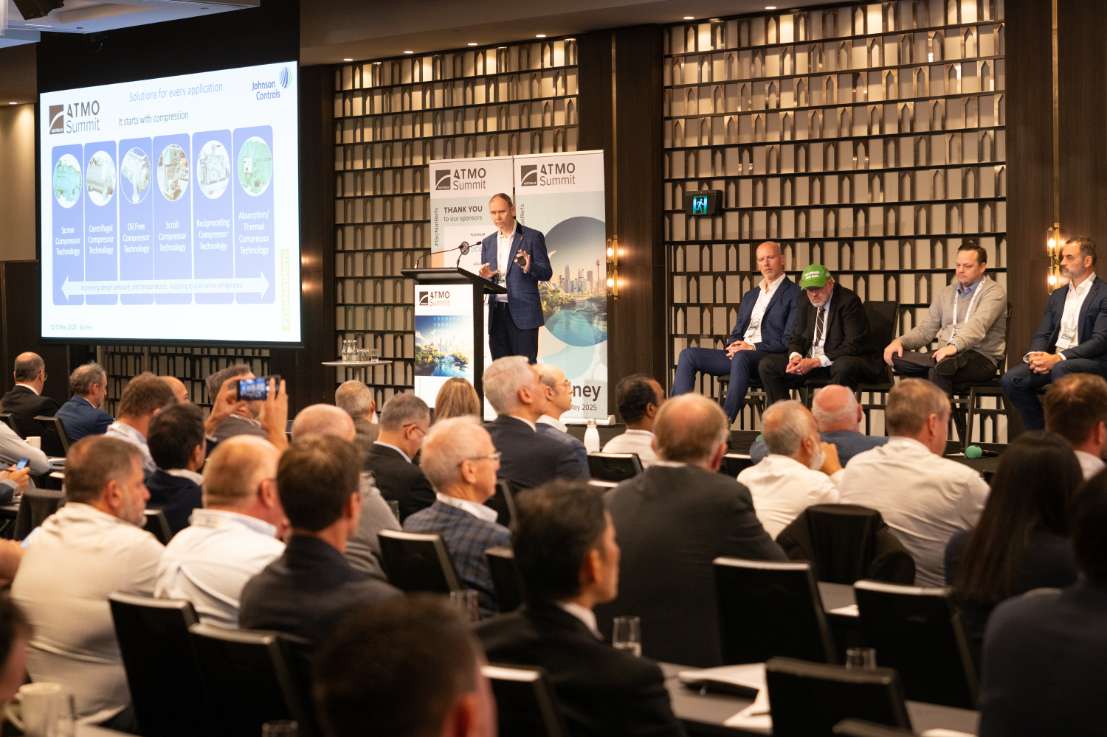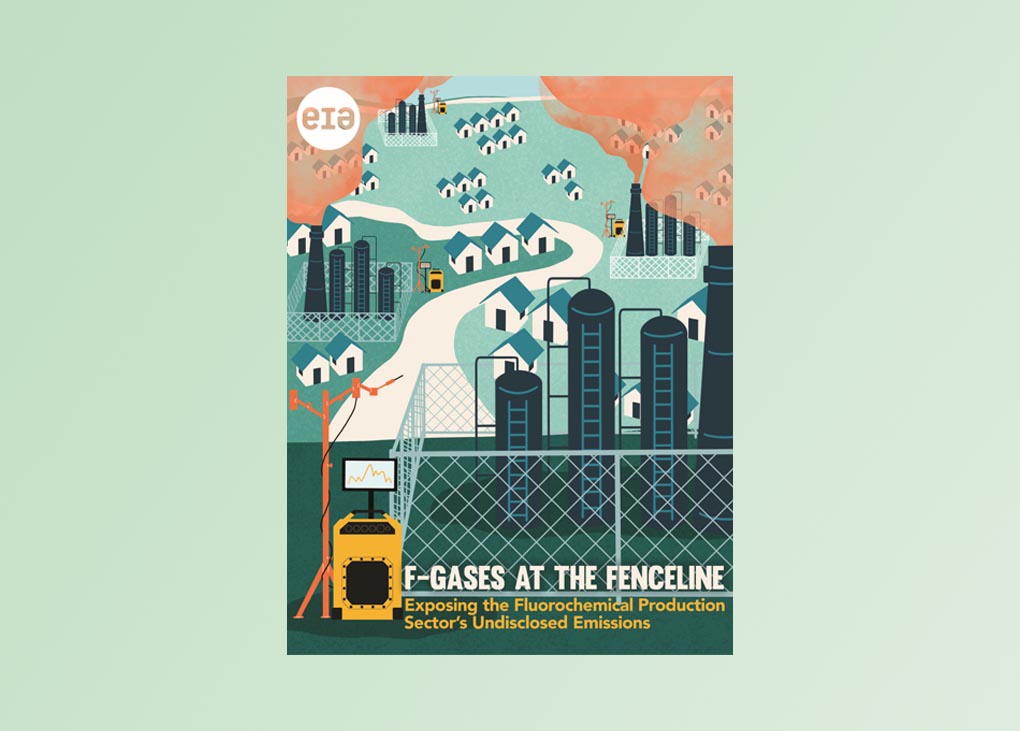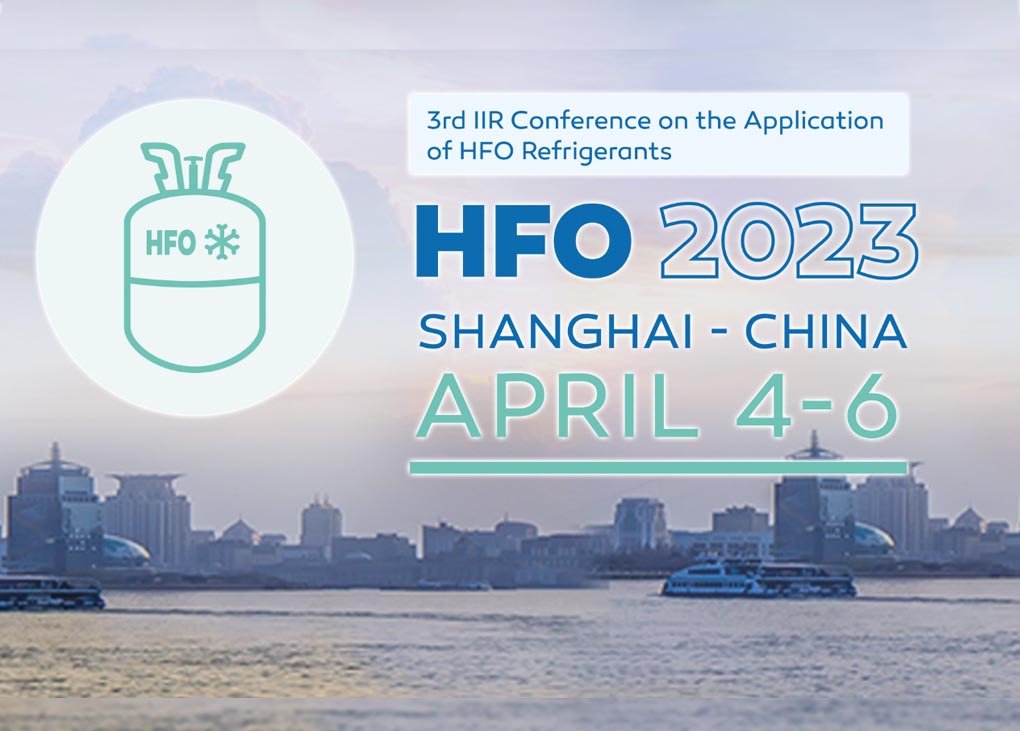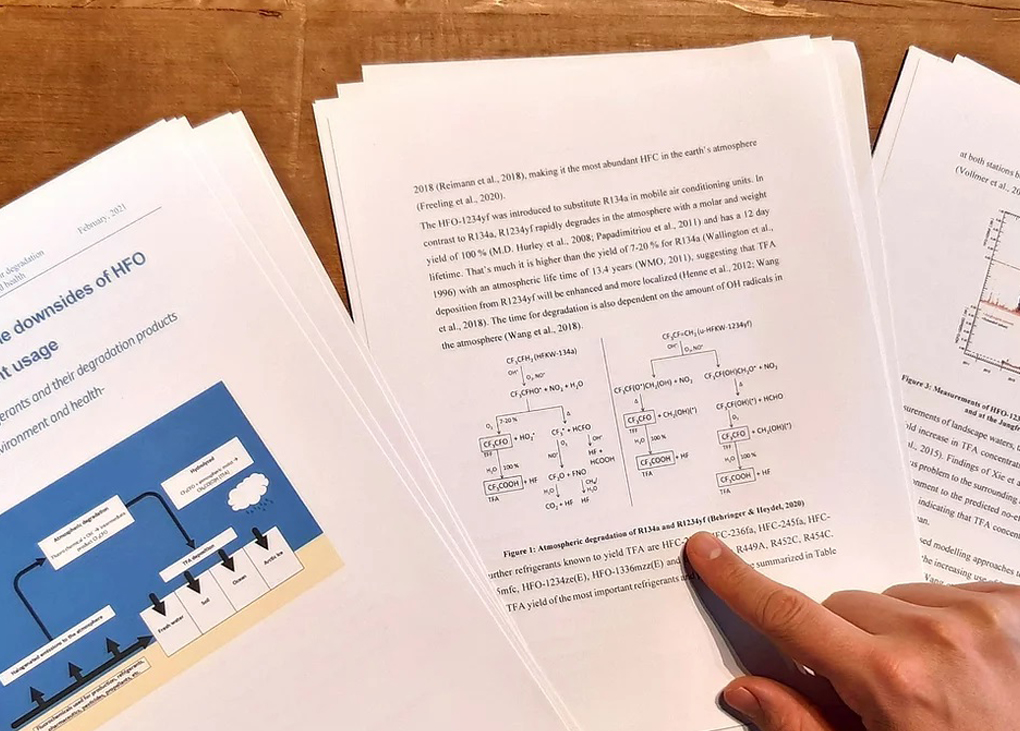Page 1
Tag: HFOs
-

Report highlights hidden impacts of HFOs
The Environmental Investigation Agency (EIA) has released a report that explores the upstream and downstream impacts of HFOs, the latest generation of fluorinated refrigerants.
-

ATMOsphere returns to Australia with new momentum
From May 12–13, the ATMOsphere conference returned to Australia to continue its work promoting the uptake of natural refrigerants.
-

European views on the F-gas phase-out
HVAC&R News reached out to experts in Europe who have been closely engaged with the revision of the F-gas regulation for their views.
-

Study shows harmful greenhouse potential of HFOs
Research has found that three HFOs produce the extremely powerful greenhouse gas trifluoromethane (R23) when they react with ozone.
-

EIA flags rogue emissions at fluorochemical plants
The Environmental Investigation Agency (EIA) has released a report presenting evidence of high-GWP and ozone-depleting gases being emitted from two major fluorochemical facilities in the US. For the report, EIA investigators used an infrared detection device at the fencelines of two production facilities operated by Honeywell and Chemours in Baton Rouge, LA and Corpus Christi, […]
-

CFCs on the rise again?
A new study has found increased emissions of chlorofluorocarbons (CFCs), despite their production being banned under the Montreal Protocol. The researchers say the most likely cause is a “loophole” that allows the creation of CFCs during the production of other chemicals, including common synthetic refrigerants. The research, published in Nature Geoscience and led by the […]
-

Europe votes to move away from fluorinated refrigerants
The European Parliament’s Committee on the Environment, Public Health and Food Safety (ENVI) has agreed to amendments to the F-gas regulation that will see bans on fluorinated gases in refrigeration and air conditioning equipment over the next five years. It signals a major move away from synthetic gases and towards natural alternatives. “We are making […]
-

HFO 2023 conference calling for abstracts
The International Institute of Refrigeration (IIR) has extended its call for abstracts for the HFO 2023 conference, to be held April 4–6, 2023. The conference will be hosted by the Chinese Association of Refrigeration (CAR) in Shanghai and will be the third iteration of the event. The conference aims to bring together international experts to […]
-

IOR releases refrigerant selection guide
The Institute of Refrigeration (IOR) has released a new Guidance Note, a guide to refrigeration selection. The guide aims to provide an overview of the critical points that should be considered in selecting refrigerants. The IOR says the guide, which it refers to as Guidance Note 37, will be of particular interest to equipment owners, […]
-

Winding road ahead for mobile air conditioning
While the HVAC&R sector tends to focus on the built environment, mobile air conditioning represents a significant portion of Australia’s refrigerant bank – and poses serious challenges as we look to phase down HFCs. The most recent Cold Hard Facts report indicates that mobile air conditioning comprises more than 20 per cent of Australia’s total […]
-

New controls proposed for HFCs and HFOs
Five European countries have proposed new legislation that could see HFCs and HFOs classed as per- and polyfluoroalkyl substances (PFAS) – and covered by tighter regulations. PFAS are a group of synthetic chemicals that are very persistent in the environment and the human body. They do not break down, and can accumulate over time. They […]
-

Researchers sound further warnings about HFOs
A new report from the German Environment Agency, and research from the University of New South Wales have raised more concerns about the environmental impacts of HFO refrigerants. When hydrofluorocarbons (HFCs) were identified as greenhouse gases, and targeted for phase-down under the Kigali Amendment to the Montreal Protocol, hydrofluoroolefins (HFOs) were put forward as an […]
-

New report on potential health impacts of HFOs
A new report has highlighted the possible environmental and human health risks posed by some HFOs – the newest generation of synthetic refrigerants – breaking down in the atmosphere. Report and statement of the downsides of HFO refrigerant usage has been produced by Refolution Industriekälte GmbH, a European refrigeration company that specialises in low-temperature systems […]
-

Video on flammability of A2L and A3 refrigerants
Chemical company Chemours has released a video titled Hydrocarbons: The Burning Truth, which looks at differences in flammability between A2L and A3 refrigerants. The video features Dr Scott Davis, CEO of Gexcon US, who explains the parameters impacting refrigerant flammability. These include how much of a gas is required for an ignition event to occur […]
-

New study raises concerns over HFOs
Research co-led by York University and Environment and Climate Change Canada has unearthed new evidence about the impacts of hydrofluoroolefins (HFOs) on the environment. HFOs have been positioned by some as the future of synthetic refrigerants. They have zero ozone-depleting potential and break down very quickly in the atmosphere, resulting in very low global warming […]
-

Webinars on safe use of HFC alternatives
Industry groups in Europe and around the world are joining together to provide information on the safe adoption of alternatives to high-GWP HFC refrigerants via the REAL Alternatives 4 LIFE learning program. The program covers the full range of low-GWP refrigerants, including hydrocarbons, HFOs, carbon dioxide and ammonia. On May 28, the REAL Alternatives 4 […]
-

Sneak peek: Cold Hard Facts update
An updated version of Cold Hard Facts 3 is on the way and should be ready in mid-2019. It will include 2017 and 2018 data, and will identify key developments and emerging trends in the Australian HVAC&R industry. Once again the Department of the Environment and Energy has employed The Expert Group to produce the report. […]